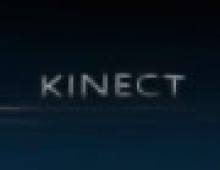
Kinect for Windows SDK and Runtime version 1.5 Released
Microsoft today released version 1.5 of the Kinect for Windows runtime and SDK. Additionally, Kinect for Windows hardware is now available in Hong Kong, South Korea, Singapore, and Taiwan.
Starting next month, Kinect for Windows hardware will be available in 15 additional countries: Austria, Belgium, Brazil, Denmark, Finland, India, the Netherlands, Norway, Portugal, Russia, Saudi Arabia, South Africa, Sweden, Switzerland and the United Arab Emirates.
The latest SDK features Kinect Studio, a new tool which allows developers to record and play back Kinect data, shortening and simplifying the development lifecycle of a Kinect application. Now a developer writing a Kinect for Windows application can record clips of users in the application?s target environment and then replay those clips at a later time for testing and further development.
A set of Human Interface Guidelines (HIG) are also provided to guide developers on best practices for the creation of Natural User Interfaces using Kinect.
In addition, the Face Tracking SDK provides a real-time 3D mesh of facial features' tracking the head position, location of eyebrows, shape of the mouth, etc.
Other new features include sample code additions and improvements. There are many new samples in both C++ and C#, plus a "Basics" series of samples with language coverage in C++, C#, and Visual Basic.
Kinect for Windows SDK v1.5 also offers Seated Skeletal Tracking, which tracks a 10-joint head/shoulders/arms skeleton, ignoring the leg and hip joints. It is not restricted to seated positions; it also tracks head/shoulders/arms when a person is standing.
Skeletal Tracking is supported in Near Mode, including both Default and Seated tracking modes. This allows businesses and developers to create applications that track skeletal movement at closer proximity, like when the end user is sitting at a desk or needs to stand close to an interactive display.
Microsoft has also made performance and data quality enhancements, which improve the experience of all Kinect for Windows applications using the RGB camera or needing RGB and depth data to be mapped together
Kinect for Windows runtime provides Joint Orientation information for the skeletons tracked by the Skeletal Tracking pipeline. The Joint Orientation is provided in two forms: A Hierarchical Rotation based on a bone relationship defined on the Skeletal Tracking joint structure, and an Absolute Orientation in Kinect camera coordinates.
The latest SDK features Kinect Studio, a new tool which allows developers to record and play back Kinect data, shortening and simplifying the development lifecycle of a Kinect application. Now a developer writing a Kinect for Windows application can record clips of users in the application?s target environment and then replay those clips at a later time for testing and further development.
A set of Human Interface Guidelines (HIG) are also provided to guide developers on best practices for the creation of Natural User Interfaces using Kinect.
In addition, the Face Tracking SDK provides a real-time 3D mesh of facial features' tracking the head position, location of eyebrows, shape of the mouth, etc.
Other new features include sample code additions and improvements. There are many new samples in both C++ and C#, plus a "Basics" series of samples with language coverage in C++, C#, and Visual Basic.
Kinect for Windows SDK v1.5 also offers Seated Skeletal Tracking, which tracks a 10-joint head/shoulders/arms skeleton, ignoring the leg and hip joints. It is not restricted to seated positions; it also tracks head/shoulders/arms when a person is standing.
Skeletal Tracking is supported in Near Mode, including both Default and Seated tracking modes. This allows businesses and developers to create applications that track skeletal movement at closer proximity, like when the end user is sitting at a desk or needs to stand close to an interactive display.
Microsoft has also made performance and data quality enhancements, which improve the experience of all Kinect for Windows applications using the RGB camera or needing RGB and depth data to be mapped together
Kinect for Windows runtime provides Joint Orientation information for the skeletons tracked by the Skeletal Tracking pipeline. The Joint Orientation is provided in two forms: A Hierarchical Rotation based on a bone relationship defined on the Skeletal Tracking joint structure, and an Absolute Orientation in Kinect camera coordinates.




















